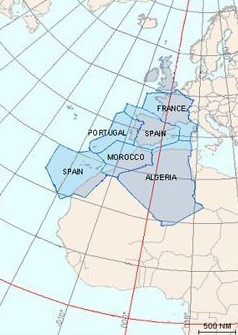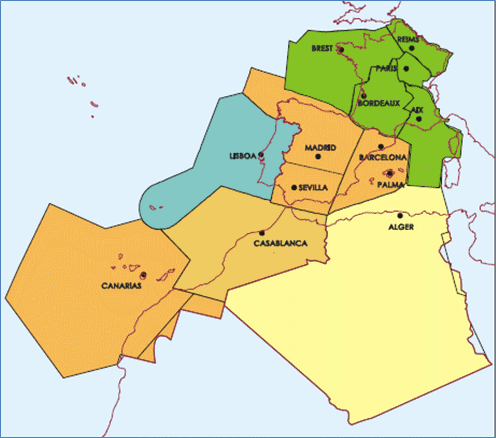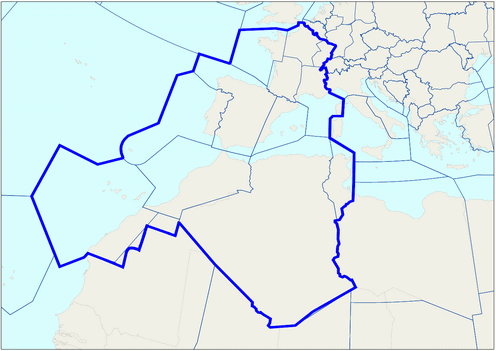AEFMP History
AEFMP history began in the early 90' ...

The basis of AEFMP
The AEFMP history is divided into four stages. Each stage is characterized by an agreement between its members, either Joint Plan or MoU, signed by them and member States and presenting the objectives they want to attain.
1st stage: The EFP Plan

In 1990, Spain, France and Portugal created the EFP plan, with the objective of optimizing, harmonizing and integrating their Air Navigation Systems in the wake of the principles established in the EUROCONTROL EATCHIP Program. The EFP Plan was signed on 3rd July 1991.
2nd stage: The joint AEFMP Plan

In 1996, after five years of fruitful collaboration, it was decided to extend the Plan and include Algeria and Morocco. This decision was taken to optimize the main traffic flows in the area through coordination and ATS systems interoperability improvement with these two States. The AEFMP Plan was signed on 13 December 1996. However, both Plans continued to work in parallel, although in close coordination, for six years.
In 2002 the Air Navigation Systems of Algeria and Morocco attained a sufficient level of compliance with the European partners’ ones. In October 2002, the Joint AEFMP Plan was born as the result of the merging of the former EFP and AEFMP Plans.
3rd stage: The AEFMP Memorandum of understanding

In an ever-changing world, the ATM was not an exception and the AEFMP had the required knowledge to adapt its cooperation framework to the latest developments.
A. The evolution of worldwide ATM context
On a worldwide level, the ICAO GANP was approved presenting a framework for harmonizing avionics capabilities and the required air traffic management (ATM) ground infrastructure.
The air navigation system has significantly evolved from a harmonization to a performance approach, particularly due to the International Civil Aviation Organization strategy (ICAO) through the Global Air Navigation Plan (GANP), out of the ICAO Twelfth Air Navigation Conference held in 2012.
The latest GANP edition (ICAO Doc 9750-AN/963, 5th Edition–2016) covers the 2016-2030 period. This edition presents a comprehensive planning tool, the Aviation System Block Upgrades framework (ASBU framework) for the States to upgrade their existing systems in order to support global harmonized air navigation. It also identifies the next generation of ground and aviation technologies needed to meet the desired performance improvements from the ASBU modules.
Eventually, it is also worth to mention the extension of the EUR/NAT ICAO Region to include Morocco, Algeria and Tunisia.
B. The evolution of European ATM context
On the European level, major evolutions have occurred in the European Union regulatory context. Several EC Regulations derived from the Single European Sky (SES) entered in application. In particular, from 2004, the SES legal framework fully applies within European Union countries.
The AEFMP, during its existence, has accommodated smoothly the regional ATM institutional environment evolutions stemming from the EATCHIP Program followed up by EATMP guidelines. Nevertheless, as a consequence of the evolution of the international framework, the Joint AEFMP Plan required an update in order to be kept aligned with the evolving policies.
Furthermore, the introduction of SES throughout its different packages, aiming to improve the performance and sustainability of the European aviation, have brought a new framework for the cooperation between countries such as the set-up of Functional Airspaces Blocks (FABs) which had a major impact on ANSPs environment.
Regarding ATM systems evolution, the European ATM Master Plan was elaborated, so was the SESAR R&D program; the Common Projects and the Deployment Manager regulations were published, paving the way for the development and the implementation of new concepts, technical improvements and methods for the air-traffic management. Then, SESAR2020 took over from SESAR in 2017, major evolution to SESAR deployment was prepared in 2018 through Pilot Common Project revision and Common Project 2 elaboration, after the update of European ATM Master plan in order to reflect its synergies and consistencies with the Deployment Programme and the Network Strategy Plan.
In order to tackle the aforementioned context changes and cope with new regulations, the former Joint AEFMP Plan evolved toward to the current AEFMP Memorandum of Understanding, ratified by Civil Aviation Authorities/ Air Navigation Services Providers representatives, in the presence of representatives of the European Commission, during the World ATM Congress held in Madrid on March 9th, 2016.
4th stage: The extension of AEFMP

In 2018, having celebrated its 15th birthday, AEFMP welcomed Tunisia as new member, during the World ATM Congress held in Madrid, on March 9th 2018, thus demonstrating its dynamism, maturity and willingness to strengthen its areas of cooperation. The AEFMP area, emphasizing such links between 6 States surrounding Mediterranean Sea, constitutes the very wide south-west entry door of the European airspace.

